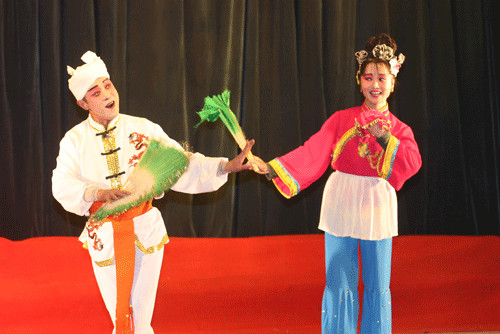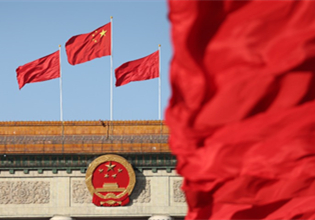Er ren tai
 |
Er ren literally means 'two people', and tai means 'stage'. Er ren tai therefore refers to a kind of folk opera in which two performers, usually one male and the other female, perform onstage. |
Year: 2006
Sort: Traditional Opera
Area: Hebei province, Shanxi province, Inner Mongolia autonomous region
Serial No.: IV-73
Declarer: Hohhot, Inner Mongolia autonomous region, Hequ County, Shanxi province, Kangbao County, Hebei province
Er ren literally means 'two people', and tai means 'stage'. Er ren tai therefore refers to a kind of folk opera in which two performers, usually one male and the other female, perform onstage. It is popular in mid and western Inner Mongolia, as well as northern Shanxi and Hebei provinces.
Its melody is based on folk songs. Originating at the end of the Ming Dynasty (1368-1644), er ren tai was often performed at festivals, and no formal stage was needed at that time. It could be performed in a courtyard, a square, or even in a room.
Er ren tai can roughly be classified into two different styles. The one popular in the region to the west of Hohhot, the capital of Inner Mongolia, is usually called 'Western Style', and the other, popular in the region to the east of Hohhot is called the 'Eastern Style'. The traditional plays mainly depict the hardships of rural life at that time or praise true love. Some of them are based on myths or historical stories.
Er ren tai is in danger of dying out as many practitioners are aging or passing away. Inconvenient transportation to rural areas where the art form is still popular makes it difficult to do research and collect more information on it. Therefore it needs to be protected.



 Print
Print Mail
Mail





